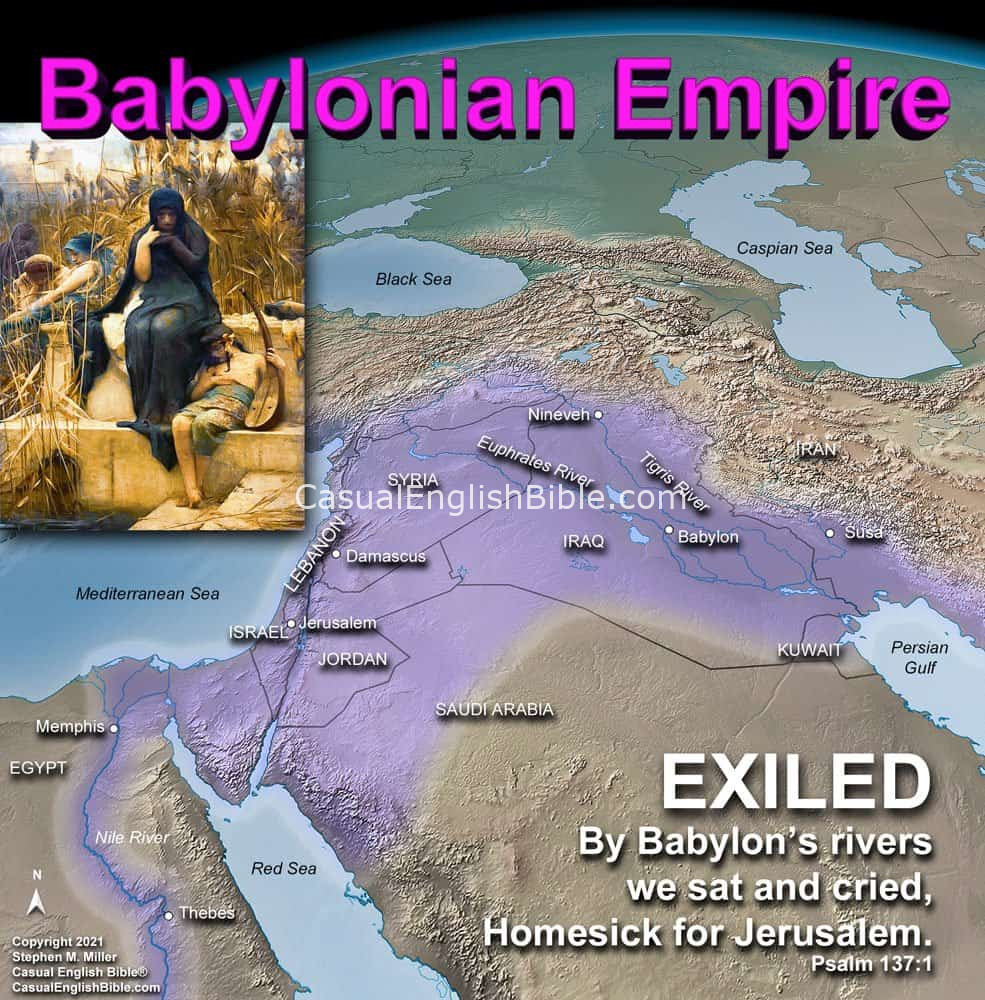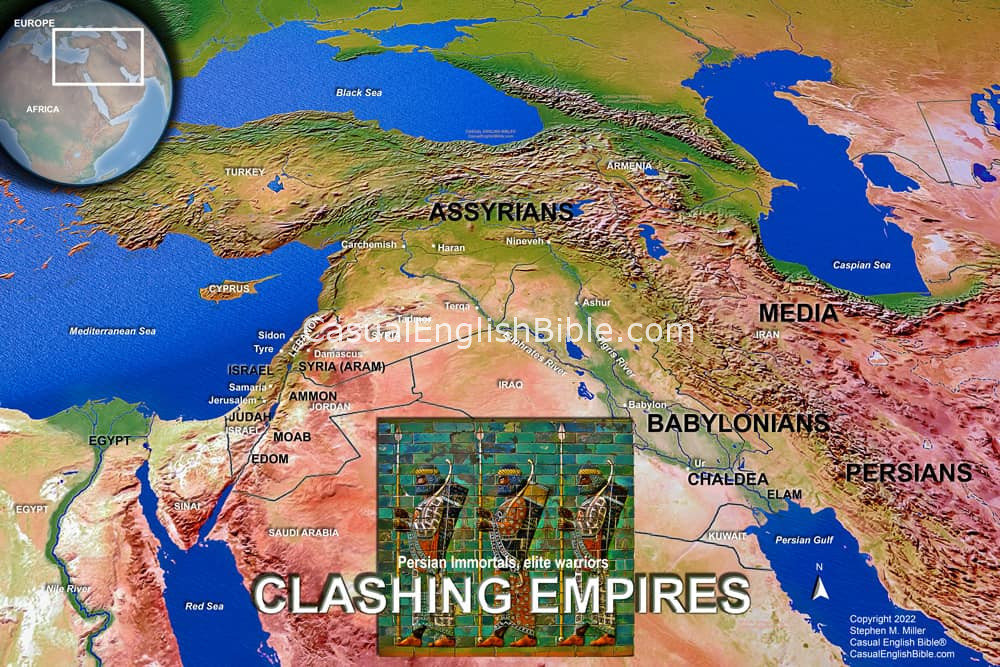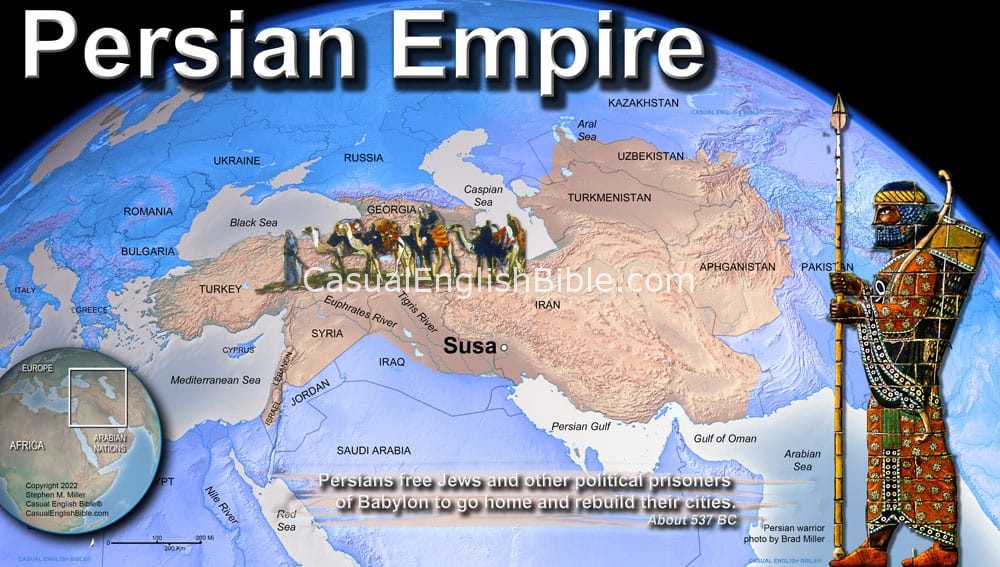Isaiah 35
A highway for God’s people
Day the desert blooms
1Deserts will celebrate,
For the parched lands
Are going to bloom like a crocus. [1]
It’s going to get loud and happy.
The desert’s beauty will rival
Lebanon’s forest,
Carmel’s mountains,
And the Plains of Sharon.
People will see our God’s power.
They’ll see how wonderful he really is.
Give us strength for what we’ve got to do
3Strengthen our weak hands for what’s ahead.
And steady our tiring, trembling knees. [2]
“Don’t be scared. Be strong, instead.
Your God is here.
He’s here to settle the score
And to punish those who hurt you.
He has come to your rescue.”
5Blind people will see.
Deaf people will hear. [3]
6Folks who couldn’t walk
Will leap like running deer.
People who couldn’t talk
Will sing for joy.
What a change is coming:
Water in the desert,
Streams across the sprawling sands.
7Scorched land becomes a lake.
Parched ground becomes a spring.
The home of desert jackals becomes a wetland marsh
Where reeds and papyrus grow.
Highway for God’s people
8A Way will appear, a path to take.
People will call it the Holy [4] Way.
It’s reserved for people walking that Way. [5]
People going in other directions
Can’t take this path.
Foolish people go another way.
No wild animals will attack. [6]
They’re nowhere around.
This road is reserved for God’s people.
10The LORD’s people will come home singing,
Hitting the high notes when they hit Jerusalem.
They’ll have joy from head to toe
Pouring out in song,
With happiness, now and never ending.
Sadness and heartache
Back away and disappear.
Footnotes
Some scholars say this chapter expresses in poetry the joy the Jewish people will feel in the mid-500’s BC, when they return home from exile. A generation earlier, in 586 BC, Babylonian invaders based in what is southern Iraq, near Baghdad, leveled Jerusalem and dismantled the government of Judah by deporting most survivors of the war to Iraq. The deportation was intended to keep the Jews from restarting their nation. The plan worked. Persians from what is now Iran defeated Babylon and then freed the political prisoners, including the Jews.
Perhaps a prayer for strength to make the thousand-mile (1600 km) trip home from exile. Or for strength to rebuild Jerusalem and the Jewish nation that had been partly resettled by other herders and farmers.
John the Baptist asked if Jesus was the Messiah the Jews had been hoping would come to save them and restore the glory of Israel as an independent and free nation again. Jesus answered: “Go and tell John exactly what you’ve seen and heard. The blind can see. The crippled can walk” (Luke 7:22). Many Jews seemed to take the prophets literally and expected to see the Messiah performing those miracles. Bible writers said Jesus did fulfill them. And one quoted Jesus as saying so himself (Luke 4:17-21).
“Holy” means one thing when talking about people and another thing when talking about God. “The Holy One” is a title of God. Scholars say that when the Bible says God is holy, it’s saying there is nothing like him; he’s unique, “wholly other” scholars say, and he’s perfectly loving and just and pure. When the word “holy” describes people or sacred objects in the tent worship center, for example, it’s talking about someone or something devoted to God and reserved for him. Worship utensils such as lampstands were considered holy because they were reserved for sacred use, devoted to God. People, too, were considered holy when they devoted themselves to God and to his goodness. They wear goodness like a skin and they begin to resemble the Bible’s description of their Father: “God is love….We know God loves us. We believe it with all our hearts because God is love. Everyone who embraces a life of love embraces God, and God embraces them. Love unites them” (1 John 4:8, 16).
Perhaps a reference to the trail the Jews would take through the desert between Babylon and Jerusalem. But the “Way” later became the name for followers of Jesus. Before people called them Christians, the followers called themselves “followers of the Way” (Acts 9:2). Some described this new religious movement as “the way of the Lord.” Didache (Teaching), a Christian manual written in either the first or second century AD, spoke of “Two Ways.” There was the way that led to life, and the way that led to death. When Jesus’ disciple, Thomas, asked how to get to where Jesus was going, so he could go, too, Jesus said, “I am the way. I am the truth. I am the life. If you want to get to the Father, I’m the one who’ll take you there” (John 14:6).
People traveling long distances were afraid of getting attacked by hungry animals. But the prophet told them not to be afraid.
Discussion Questions
- Sorry, there are currently no questions for this chapter.









